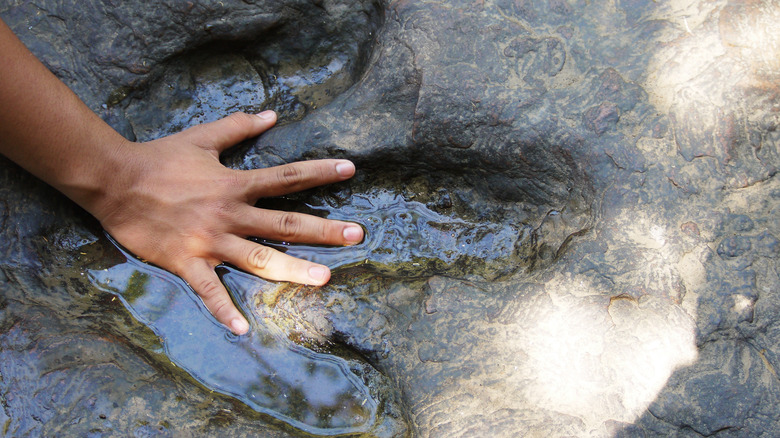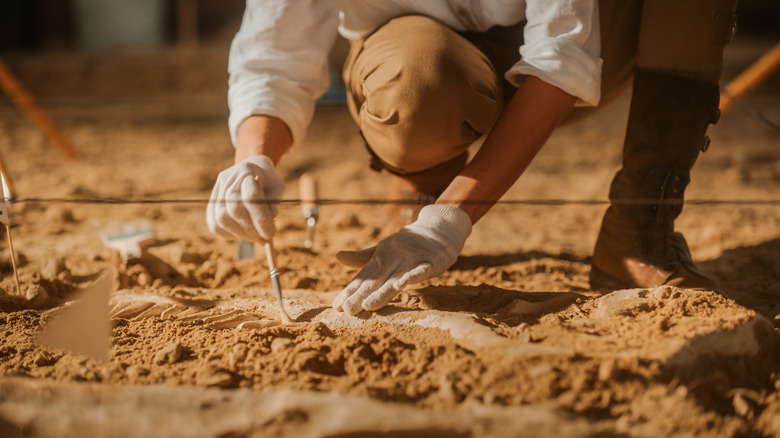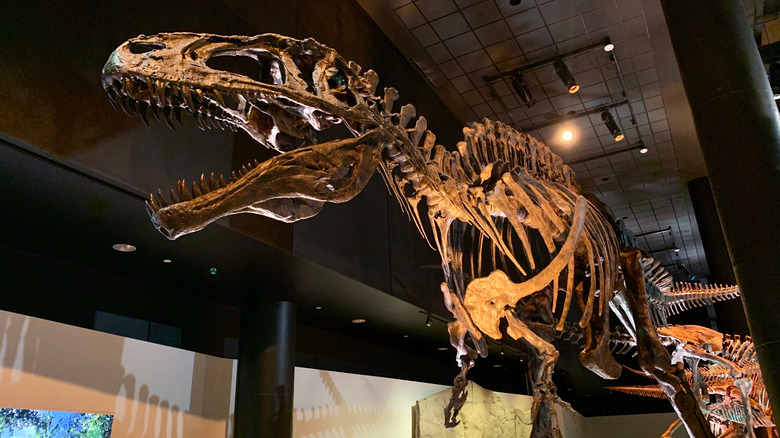Dire Droughts In Texas Led To An Amazing Dinosaur Discovery
Many people have been fascinated with dinosaur fossils since they were little. Movies like "Jurassic Park" and "The Land Before Time" might have played a part in pushing this early interest. Today, paleontology, or the study of fossils to understand prehistorical life forms (per National Geographic), is a long and rich branch of science that deals with the Earth's fossil records of organisms that have come and gone. However, the Natural History Museum, London states that there's much more to paleontology than dinosaurs, as researchers in that branch are concerned with many different kinds of fossil life.
How paleontologists find and study fossils requires its own explanation. According to Smithsonian Magazine, you don't need a formal education in the field to find and collect fossils. Many fossils throughout history were discovered by sheer accident. Anyone can participate in fossil-finding. That said, paleontologists are absolute professionals who use specialized tools and knowledge sets to fit the job. Recently, according to CNN, there was a massive paleontology discovery involving 113-million-year-old dinosaur tracks in Texas.
113 million year old tracks were found in Dinosaur Valley State Park
On August 23, 2022, researchers unearthed a fascinating find at Dinosaur Valley State Park in Texas. Approximately 113-million-year-old dinosaur tracks were discovered in a riverbed that was long dried up, according to CNN. The cause of this is that Texas has been experiencing fairly severe drought conditions lately, which created unusually dry riverbeds. Of course, that's not all that the drought is responsible for, either. Various other things resulting from the drought include farmers being forced to kill more cows due to more than 93% of the state currently suffering from harsh conditions (via Reuters).
As CNN explains, much of this drought is also a consequence of climate change, which pushed temperatures and dryness to dangerous levels. As The New York Times reports, the tracks belonged to the Acrocanthosaurus, a bipedal dinosaur that resembled the Tyrannosaurus rex that many people will undoubtedly be familiar with. But, according to researchers, these tracks won't stay visible for long and will most likely be buried under rain torrents and sediment once again.
What was the Acrocanthosaurus?
Dinosaur classification is incredibly diverse yet somewhat straightforward. As the National Park Service explains, there are seven major groups that dinosaurs are classified as: Sauropods, stegosaurs, ankylosaurs, ornithopods, pachycephalosaurs, therapods, and ceratopsians. Dinosaurs thrived on the planet for around 170 million years until their extinction approximately 66 million years ago. Many researchers consider crocodiles and birds to be "living dinosaurs," which provides an ample amount of information to study.
As the Natural History Museum, London states that the Acrocanthosaurus, a name which means high-spined lizard, was around in the early Cretaceous period, which was about 105 to 115 million years ago. That dating lines up with the tracks found in Dinosaur Valley State Park, which points to signs of the Acrocanthosaurus roaming the region at some point. According the Daily Mail, the Acrocanthosaurus was approximately 15 feet tall and weighed close to 8 tons. With this fascinating discovery, who knows what paleontologists and fossil hunters will unearth next.


